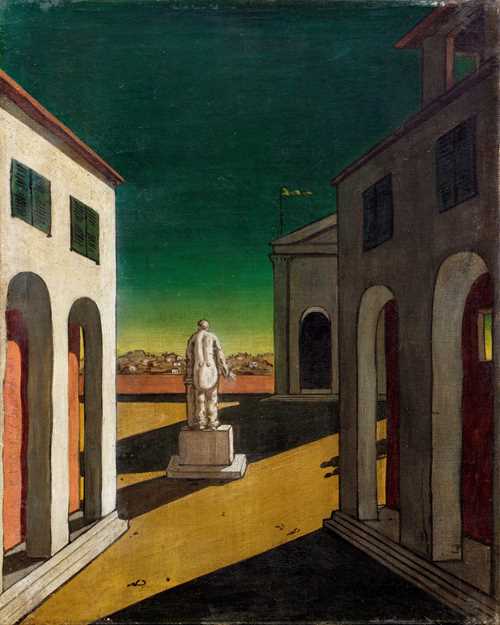
Lotto 3553 - A193 Impressionismo e arte moderna - venerdì, 03. luglio 2020, 16h00
GIORGIO DE CHIRICO
Provenance:
- Galleria La Nuova Bussola, Turin.
- Private collection Italy, purchased in the 1950s at the above gallery and by descent to the present owners.
Born in Greece to Italian parents, Giorgio de Chirico was surrounded by images of antiquity since his early childhood. Classical mythology, history and architecture were a source of inspiration for the artist, who often incorporated these themes within a contemporary context.
After Neo-classical Neo-baroque periods, Giorgio de Chirico revisited the themes that were characteristic of his metaphysical paintings of the 1920s, including the series of the Italian Piazza. He first employed it before the World War I and took it up at various points in his career. It remained a constant source of inspiration for the artist, in which he saw "the infinite possibilities of a finite set of objects" (Michael R. Taylor, “Giorgio de Chirico and the Myth of Ariadne”, Philadelphia, Philadelphia Museum of Art, 2002, p. 133).
One of the iconic images in de Chirico's work, the present painting depicts an enigmatic, bleak urban environment whose eerie atmosphere is a hallmark of the artist's metaphysical paintings. The main motifs of the Italian Piazza series can also be found here, with empty porticoes, the suggested shadows of two people and the solitary sculpture that dominates the centre of the composition. Although de Chirico never revealed the identity of this statue, it is believed to be based on a monument to the journalist Giovanni Battista Bottero in Turin’s Piazza Largo IV Marzo. The work explores de Chirico's core concepts: classicism, modernity, time, melancholy, nostalgia and existence. Ardengo Soffici best described de Chirico's metaphysical compositions: "Giorgio de Chirico expresses as no one else has done the poignant melancholy of the close of a beautiful day in an old Italian city(...)" (Michael R. Taylor, “Giorgio de Chirico and the Myth of Ariadne”, Philadelphia, Philadelphia Museum of Art, 2002, pp. 27/28).
CHF 100 000 / 150 000 | (€ 103 090 / 154 640)
Venduto per CHF 219 900 (incl. premio dell'acquirente)
Non si assume alcuna responsabilità per la correttezza di queste informazioni.

